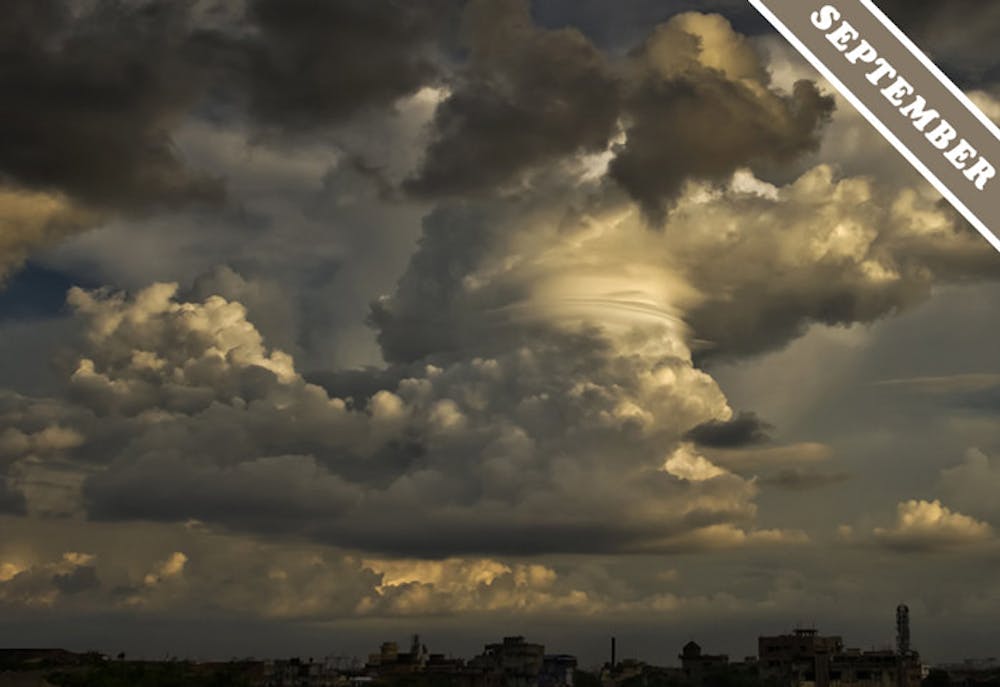I will proudly admit that I’m an avid cloud watcher. I’d rather have huge ominous dark clouds rolling into town than a pure blue sky without a single dot of my favorite part of the water cycle in site. Unlike my electronics, I love the rain even when caught in it unawares. The fact I’ve been a member of the Cloud Appreciate Society for longer than a) I’ve done radio b) the government has allowed me to watch PG13 movies c) been able to spell the word ominous both means I need to be more on top of my spelling words and that I’ve been in the cloud loving game for long enough to give a 7 step crash course into how to cloud watch.
1) Dress weather appropriate. Clouds don’t stop being breath taking when the seasons turn colder, so don’t let hypothermia’s sharp bite prevent you from enjoying some real 3D entertainment (4D if it starts to rain/snow). Pull out that sweater and wool socks at head outside.
2) Sunset is key. Clouds are amazing any time of day, but in the waning hours of the afternoon just as the hectic day slows into evening the light can open up into a colorful kaleidoscope that is caught in clouds to the west.
3) Take time to sit down and look up. The 21st century is busy enough. Find a park bench, a nice patch of grass, put down your smart phone (unless you’re snapping pictures of the clouds you’ve got your eye on), and breath. Clouds have always been here, and they always will be – but you won’t so take the time to fill up your life enjoying the beautiful little things.
4) You don’t need to set aside time to enjoy them. Yes this contradicts the step above this but bear with me. Sometimes you don’t have time between hustling from work or class to every other commitment you might have in the world to actually stop. Just while you’re jogging to your third meeting of the day, take a peek up to the sky as say “You’re looking fine** today, water cycle”. **this is the two syllable use of the word fine.
5) Know some cloud names! You can mix and match the below names to create other cloud classifications. There are more types of clouds, but these are the basics.
Cumulus: Puffy, the kind you see in children’s books or paintings of cherubs.
Cirrus: Thin, wispy and high in the sky.
Stratus: Thin and very low to the ground.
Nimbus/Nimbo: rain clouds.
Fog: Fog is Fog. Fog is ground clouds.
6) Play eye spy in the sky. With ‘imagination’ you can see anything in the sky, and this makes group cloud watching more enjoyable. Occasionally people will agree that it definitely looks like “a three headed dragon playing the cello,” but it might be best to start with a basic cat/dog/triangle description for your new cloud collogues.
7) Remember how long it took to make that specific cloud. All of the little water droplets that are floating in the one cloud conveniently shielding the sun from your eyes could have once been spread around the world. Some of the cloud could have been the same that was drank by Cleopatra, made into stew that Lewis and Clark ate, or from the kiddie pool you played in one time when you were 6. Similar to the above step, use your imagination because your wildest guesses could be accurate and no one will ever find out. Isn’t the water cycle amazing? #yes
Next time it is a cloud day, don’t get bummed, finger point out the window at the prettiest part of the water cycle and say what’s up. Clouds, while inanimate objects, will probably appreciate it.
This is the Cloud Appreciation Society's cloud of the month for September






